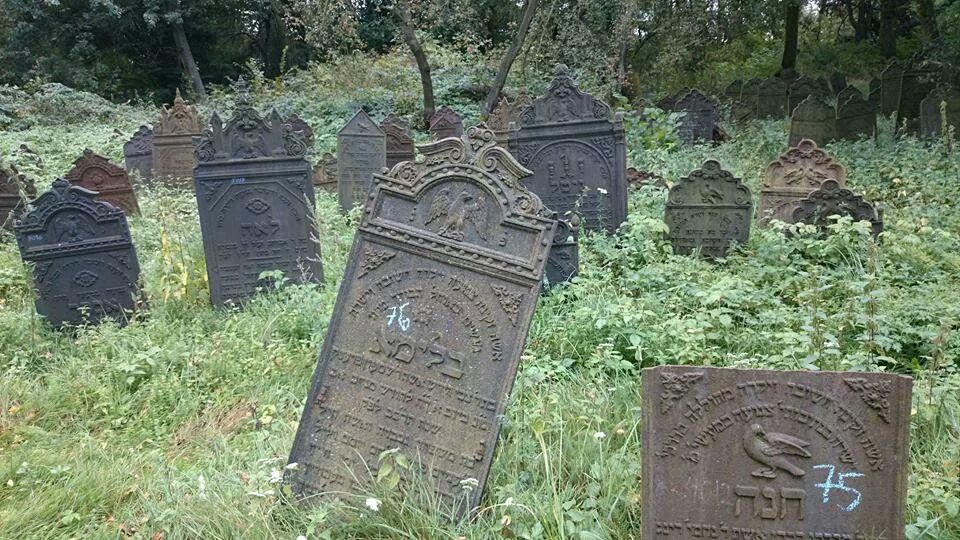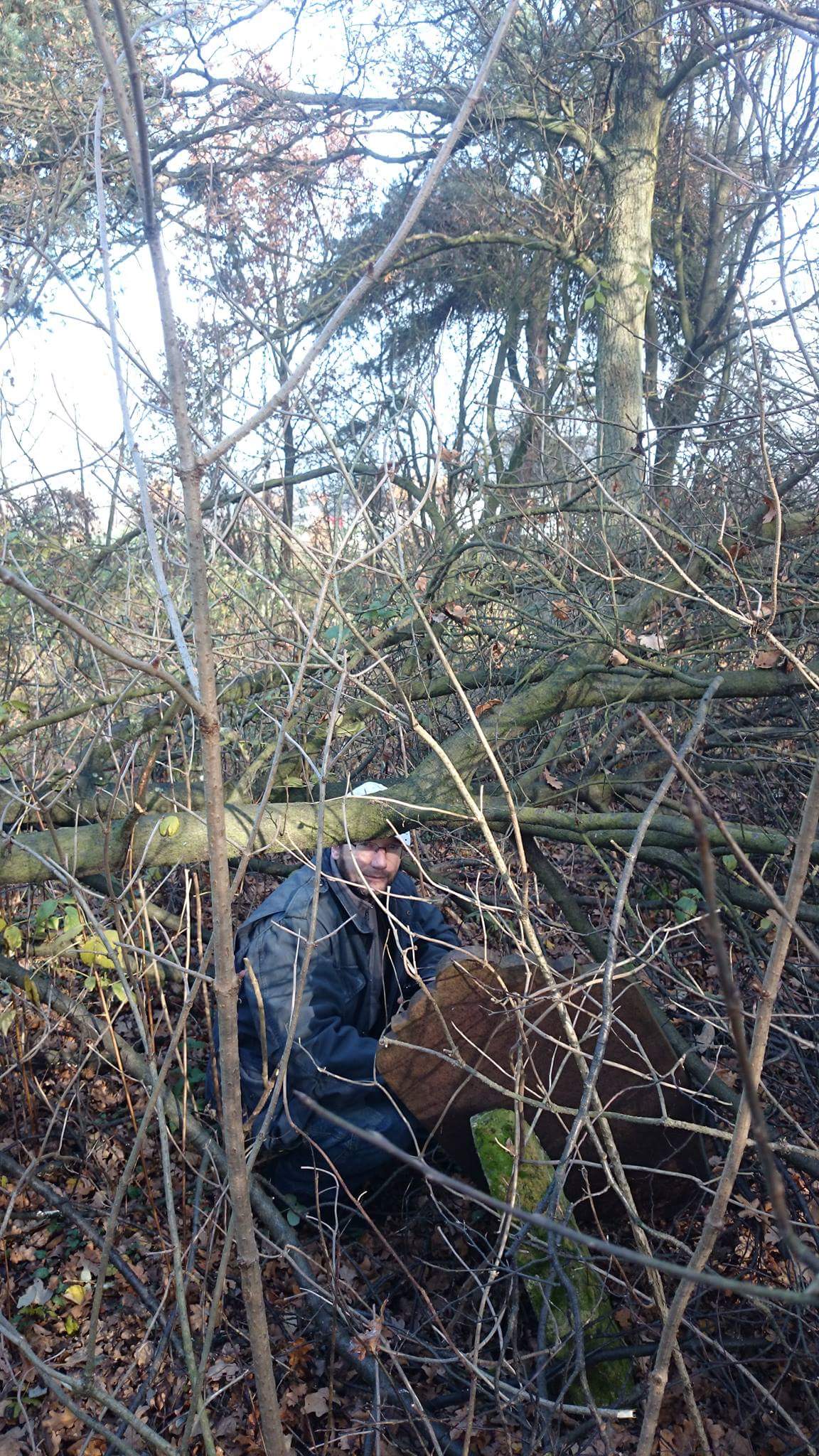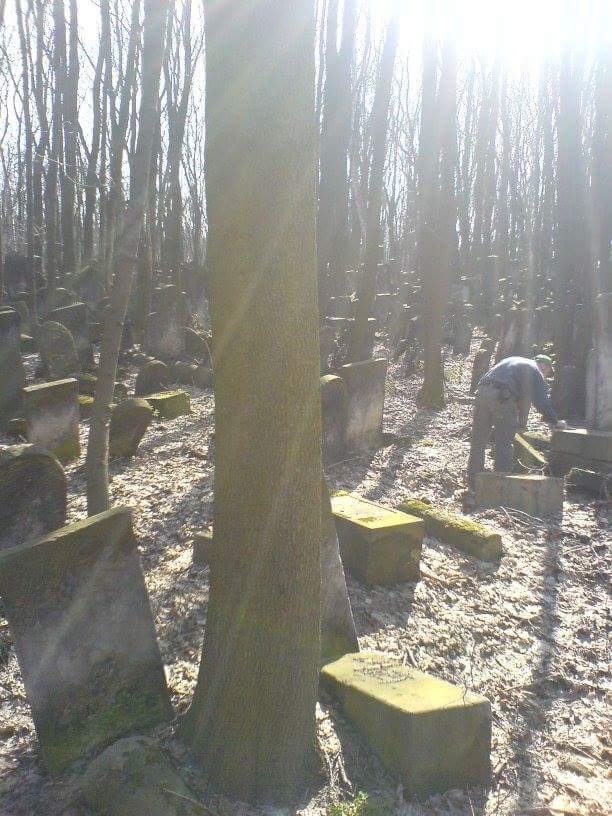
Alternate names: Krzepice [Pol], Kshepitz, קז'אפיצה [Yid], Kschepitz [Ger], Kshepitse, Кшепице [Rus]. 50°58' N, 18°44' E, 20 miles NW of Częstochowa, 19 miles SSE of Wieluń. 1900 Jewish population: 1,395. This Polish town near Częstochowa in Kłobuck County, Silesian Voivodeship is seat of Gmina Krzepice, an urban-rural administrative district in southern Poland. The gmina 2006 total population is 9,406 with that of Krzepice 4,524. Jewish settlement dates from at least 1633; four Jewish families lived there in 1720 on the river Kuźniczce-Liswartą. After 1730, the first synagogue opened. In 1765, 116 Jews created a Jewish community outside the city walls in Nowokrzepice (Trudniła) and engaged trade, craft, and had an inn. In 1808, the Jews numbered 322 (20%). They built a second synagogue in 1814-1815 by the river Liswartą (currently ul. Wenecka). Timber, limestone, bricks, and field boulders were used in the neoclassical 24.1 x 13.6 m building. Above the entrance was a stone open book with two standing lions supporting a Mogen David intertwined with strings and an inscription in Hebrew. Next to the synagogue was a Jewish school and a little further, the mikvah and rabbi's house. In 1822, the Krzepicka Jewish community became autonomous from Działoszyn. Jewish population: 1847-1,054 (>50%); 1880-1,456; 1908-1,700; and 1931-1.636. Two synagogues and four prayer rooms existed. On October 27, 1936, Jewish representatives to the guilds formed the Krzepicach Jewish Craftsmen. In 1939, the bomb damaged old synagogue eventually was raized. In 1940, young Jews were shipped to labor camps. In 1941, the Nazis created the ghettocovering the streets Rebielską, Cracow, Solna and Dzielna with a Judenrat and Jewish police. In June and July 1942, Germans sent them to Auschwitz-Birkenau in two transports. After the war, a handful of Jews returned to Krzepice, among others Szlama Rozyn with his wife Ruhl, Ruhl and Moszkowicz Haim, Corek Dawid Judek, and Josef Judkowski), but left after March 1968. The last Krzepicki Jew, Josef Judkowski, died in his eighties in Krzepice in March 1993. A ruined synagogue remains.[May 2009]
CEMETERY:
- Burial list [Jan 2015]
The cemetery established at the turn 18th century about 700 meters from the synagogue on Nowokrzepicach and about 150 m from the Liswarty river (The river bed was much closer to the cemetery.). The 1.1-hectare cemetery, once surrounded on the north, east, and south with limestone walls and a wooden fence on the west, only has remnants of the fence. Near the western edge of cemetery railways run. Once a cemetery gate was in the north wall, a shelter 5 meters long and 3 meters deep. The oldest preserved tombstone comes from 1740; and the lastest from 1946. Most inscriptions are Hebrew, but a tombstone with Polish text belongs to Ryfki Cyncynatus, who lived from 1864-1937. One of the largest clusters of iron matzevot in Europe, more than 400, makes this cemetery unique. Most of the iron matzevot were constructed in Kuźnicy Stara Huta, which at the time in the 19th century was Jewish owned. After WWII, progressive devastation of the cemetery included theft and export of iron matzevot for scrap. In 1997, the first attempt to rescue the cemetery was taken by the Polish Union of Jewish Students led by Mr. Jana Jagielskiego of the Jewish Historical Institute in Warsaw. They made a partial renovation of the building, cut some bushes, and reset many matzevot. The number of surviving tombstones as of August 17, 1997 was 244 stone gravestones, 66 matzevot of mixed materials, 402 iron gravestones. In 2000, high school students from Warsaw and Krzepice and Mr. Jerzego Fornalika of the Special Education Center Szkolno in Borzęciczkach made a thorough renovation of the building (Source). Almost all the cast iron gravestones have been raised (and sometimes excavated) from the ground, reset, cleaned, and painted in black metal paint. Thanks to these young people can now see the beautiful cemetery in all her glory. Video of cemetery. photos. Map [May 2009]
US Commission No. POCE000162
Krzepice is located in Czestochowa at 50°58' 18°44', 33 km from Czestochowa. Present population is 1,000-5,000 with no Jews. Cemetery: to the E of town, near the Liswarta River railway bridge.
- Town: Urzad Gminy i Miasta, ul. Czestochowa 13, tel. 33.
- Local: Aleksander Broda, Wojewodzki Konserwator Zabiiytkow, ul. Domagalskich 2, 42-217 Czestochowa, tel. 49-745.
- Regional: Tow. Przyjaciok Krzepic, Romuald Ciesla, ul. Wyspianskiego 15, 42-160 Krzepice.
The earliest known Jewish community is 1732. 1921 Jewish population was 1,772, 42.5%. The Orthodox Jewish cemetery was established during the first half of the 18th century. The isolated rural flat land has no signs or markers. Reached by turning directly off a public road, access is open to all with no wall, gate, or fence but the remains of a concrete wall that once surrounded the cemetery. The size of the cemetery, both before World War II and after, is 1.4 hectares. 100-500 gravestones in the cemetery, regardless of condition or position with 50% and 75% broken or toppled, date from 1749-20th century. The limestone, sandstone, and iron finely smoothed and inscribed stones or flat stones with carved relief decoration have Hebrew inscriptions. There are no known mass or structures. The municipality owns the property used for Jewish cemetery only. Properties adjacent are agricultural. The cemetery is visited rarely and was not vandalized within the last ten years. No maintenance. Vegetation overgrowth in the cemetery is a constant problem that disturbs graves.
Jan Pawel Woronczak, Sandomierska St. 21 m.1, 02-567 Warsaw, tel. 49-54-62 completed survey on 06/09/1991. He visited the site in 1986.
Krzepice, Czestochowa. Source: Gruber, Ruth Ellen. Jewish Heritage Travel A Guide to East-Central Europe. New York: John Wiley & Sons, Inc., 1992. p. 76
Photo courtesy Maria Raucher Osborn [December 2014]
Photos below from Facebook:



